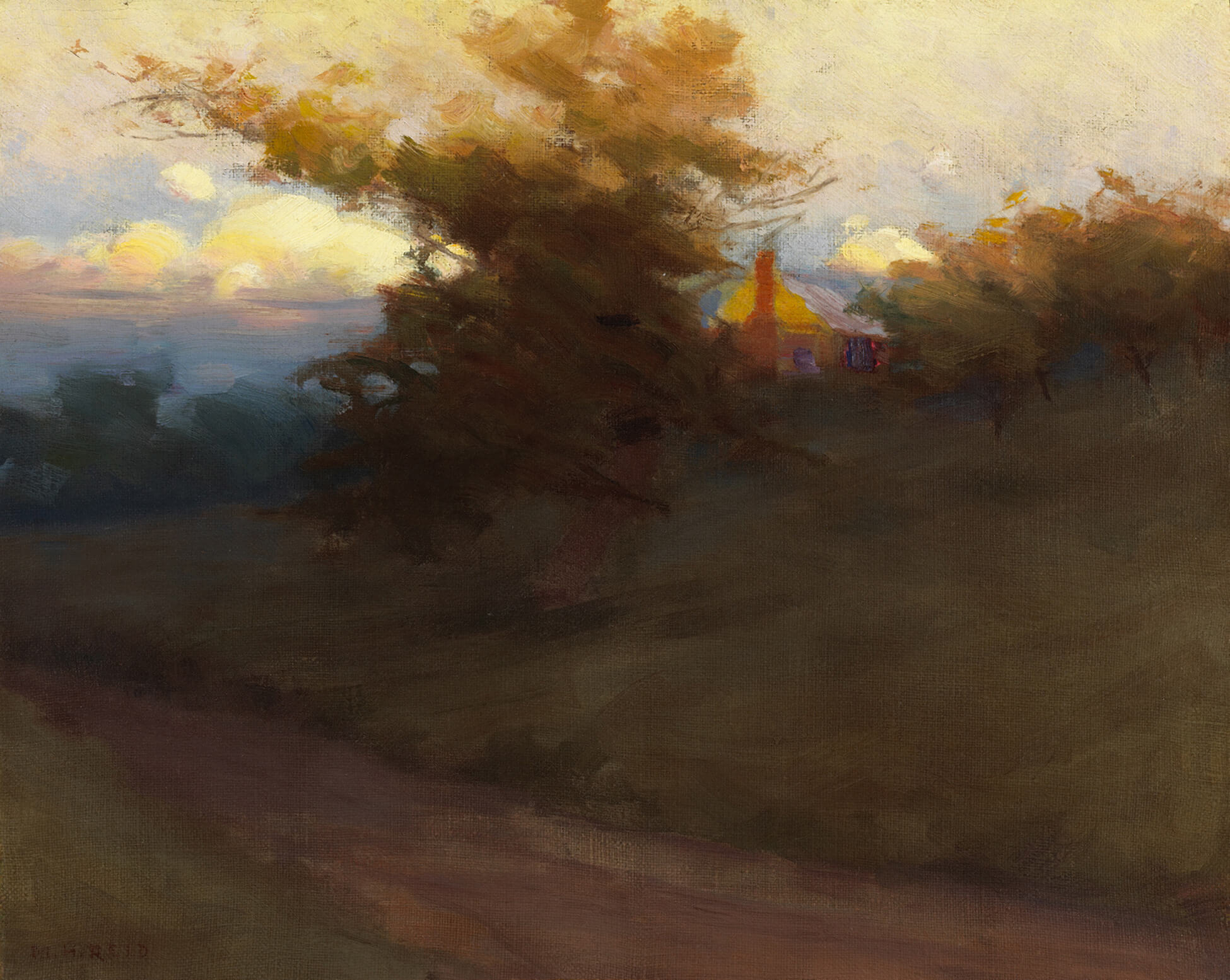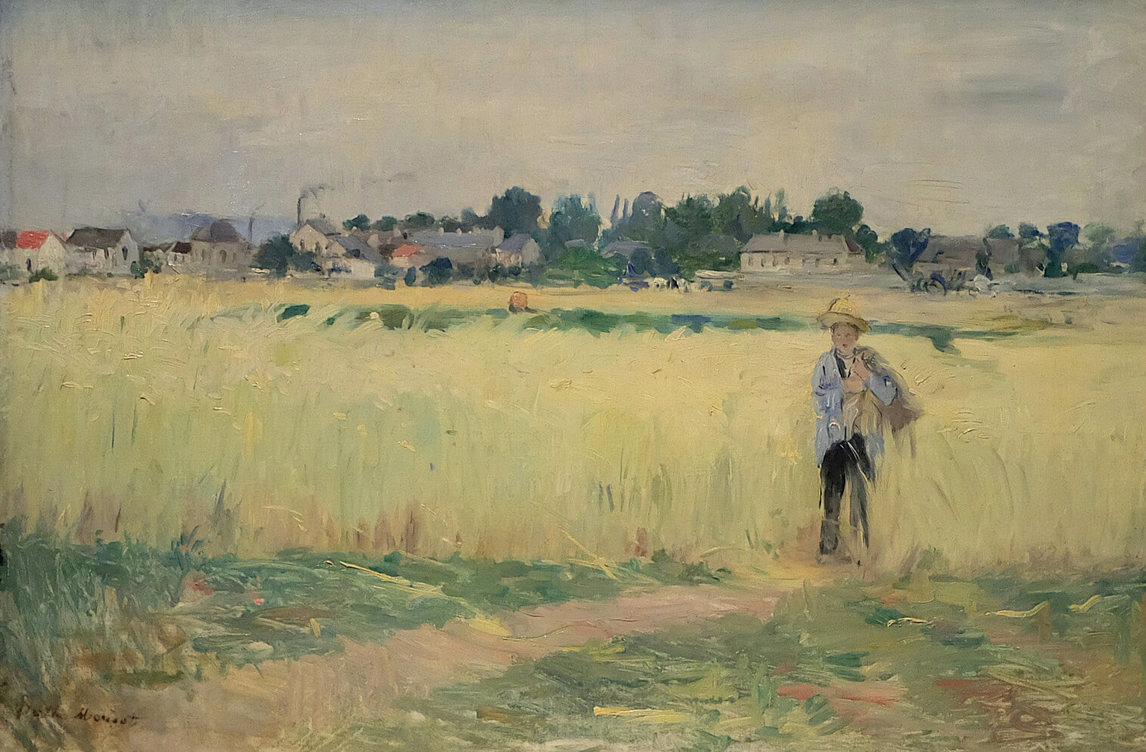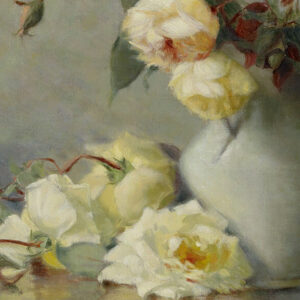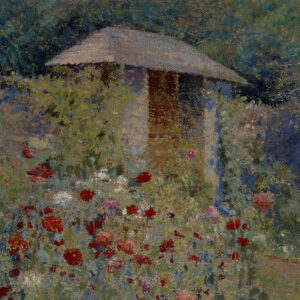Looking East 1899

Mary Hiester Reid, Looking East, 1899
Oil on canvas, 40.3 x 50.6 cm
National Gallery of Canada, Ottawa
In Looking East Hiester Reid pushes the boundaries of her art practice, moving beyond floral paintings to produce a landscape with a view of a dirt road shrouded by fields and trees. Here she expands on her expertise and academic studies in high realism, using techniques developed by artists who painted “out of doors,” or en plein air. What is most evident in this work is the artist’s clear-eyed engagement with Impressionism. Initially, it was artists in France during the mid- to late 1800s who galvanized the painting style we have come to know as Impressionism. Artists such as Claude Monet (1840–1926) and Berthe Morisot (1841–1895) sought to capture in paint the momentary, sensory effects of a scene—the impression captured by the eye in an instant—and particularly those scenes painted en plein air. Other Impressionist strategies included loosening brushwork to capture the ephemeral effects of sunlight and shadows.

Hiester Reid’s inclination to explore these influential painting strategies is evident in the depiction of diffused sunlight rising through the branches of the tree in the middle ground, the distinct “softening of outlines, and the resulting unity of effect.” She deftly captures the impression of the sun’s slow emergence from outside the picture plane; its light touches the clouds in the sky, the tree’s uppermost branches, and the side of a house nestled in the thicket in the background.
The Impressionist style of painting was not restricted to the European continent. As curator Carol Lowrey explains, artists living and working in the United States and Canada learned of Impressionist work and techniques while travelling through Europe, and particularly France, as Hiester Reid did, or by visiting commercial galleries in cities such as Montreal to view Impressionist works. For example, in 1892 the Montreal gallery W. Scott and Sons held an exhibition of French Impressionist painting, the same year in which Hiester Reid exhibited the first of two known works titled Roses and Still Life. The artist was awarded the prize for “best still life” for this work at the Art Association of Montreal’s annual exhibition, an event that proved to be a pivotal moment in her critical success. Looking East demonstrates the powerful effect of the artist’s European travels and studies upon her artistic trajectory.

 About the Author
About the Author
 More Online Art Books
More Online Art Books
 Acknowledgements
Acknowledgements